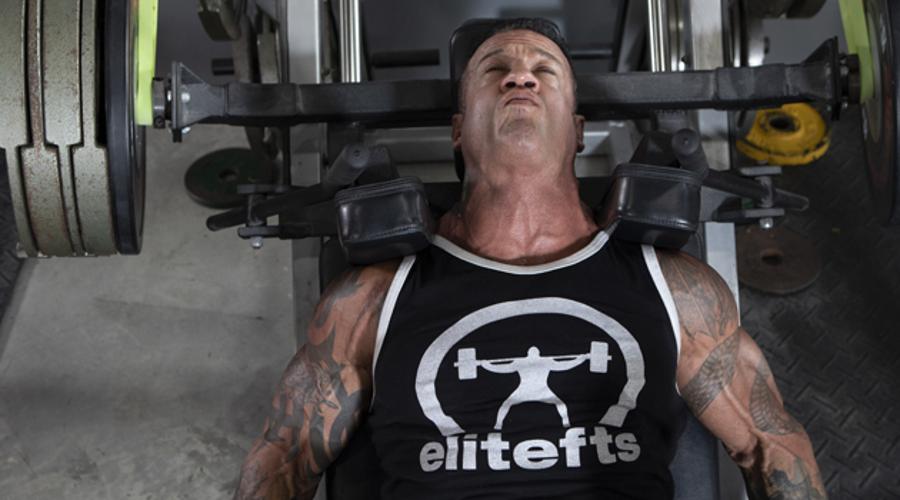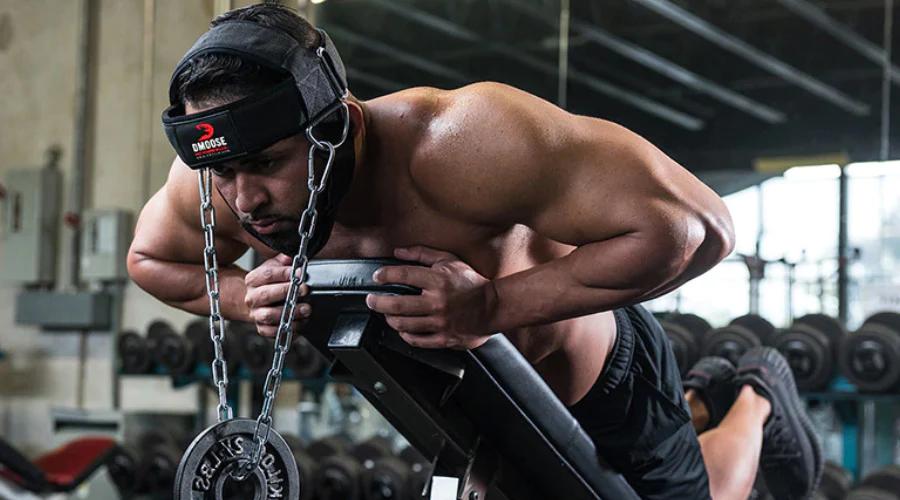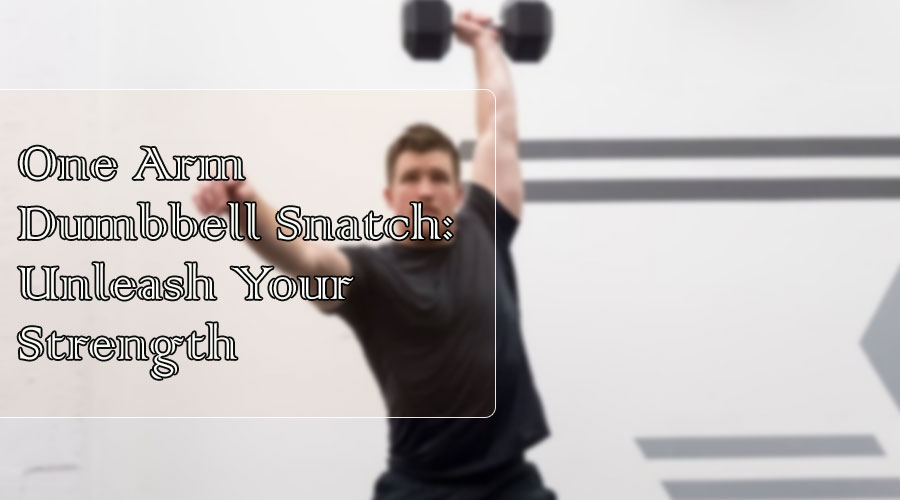The muscles in your neck play a critical role in supporting your head and allowing you to move it freely. However, neglecting to work out these muscles can lead to pain and stiffness, which can be especially problematic if you spend long hours sitting at a desk or using electronic devices. Fortunately, there are plenty of effective exercises you can do to strengthen and tone your neck muscles, including using weights like dumbbells.
By incorporating these exercises into your fitness routine, you can improve your posture, increase your range of motion, and reduce your risk of experiencing neck pain or discomfort. So if you’re looking to take your neck health to the next level, consider adding some weight-based exercises to your workout regimen today.
Importance of Neck Muscles
The neck muscles are a crucial part of the human body, as they provide support for the head and allow for a wide range of motion. They connect the head to the torso and shoulders, and are responsible for movements such as tilting the head, rotating it, and moving it forward and backward.
Strong neck muscles are important for maintaining good posture, which can help prevent strain and pain in the neck and shoulders. They can also help to prevent injuries, particularly in activities that involve contact sports or sudden movements. Additionally, strengthening the neck muscles can improve overall physical performance, particularly in activities that require good balance and stability.
Neglecting the neck muscles can lead to tension headaches, neck pain, and stiffness, which can be particularly problematic for people who spend long hours sitting or working on electronic devices. By incorporating neck exercises into a fitness routine, individuals can improve their overall neck health, reduce discomfort, and prevent future injuries.

Benefits of Strengthening Neck Muscles
Improved posture
Strong neck muscles are essential for maintaining good posture. The neck muscles are responsible for supporting the head, which weighs around 10-12 pounds on average. Poor posture can put excessive strain on the neck muscles, leading to pain and stiffness. By strengthening the neck muscles, individuals can improve their overall posture, reducing the strain on their neck muscles and preventing pain and discomfort.
Good posture also has numerous other benefits, including reducing the risk of back pain, improving lung function, and increasing confidence. Maintaining good posture can also help individuals to appear taller and more confident, which can have a positive impact on their personal and professional lives. By incorporating neck exercises into their fitness routine, individuals can improve their posture, reducing the risk of pain and discomfort and improving their overall physical health.
Reduced neck pain and stiffness
Neck pain and stiffness are common complaints, particularly among individuals who spend long hours sitting or working on electronic devices. Poor posture and weak neck muscles can exacerbate neck pain and stiffness, leading to discomfort and reduced mobility. However, by strengthening the neck muscles, individuals can reduce the risk of neck pain and stiffness, improving their overall neck health.
Neck exercises with weights can help to improve blood flow to the neck muscles, reducing tension and stiffness. They can also help to stretch and lengthen the muscles, reducing the risk of spasms and pain. By incorporating neck exercises into their fitness routine, individuals can reduce the risk of neck pain and stiffness, improving their overall quality of life.
Increased range of motion
Strong neck muscles can also improve range of motion, allowing individuals to move their head more freely and comfortably. This is particularly important for individuals who participate in activities that require good neck mobility, such as athletes or dancers. By improving range of motion, individuals can reduce the risk of injury and improve their overall physical performance.
Neck exercises with weights can help to improve range of motion by strengthening the muscles that support the head and neck. They can also help to improve flexibility, allowing individuals to move their head in a wider range of directions. By incorporating neck exercises into their fitness routine, individuals can improve their range of motion, reducing the risk of injury and improving their overall physical health.

Precautions Before Starting Dumbbell Neck Exercises
Before starting neck exercises with weights, it is important to take certain precautions to ensure safety and avoid injury. Here are some key precautions to keep in mind:
- Consult with a doctor or physical therapist: Before starting any new exercise regimen, it is always a good idea to consult with a doctor or physical therapist. They can assess your current fitness level and help you determine the best exercises to meet your goals. They can also help you identify any underlying conditions or injuries that may impact your ability to exercise safely.
- Proper technique and form: It is important to use proper technique and form when performing dumbbell neck exercises. Poor technique can increase the risk of injury, particularly to the neck and shoulders. Make sure to follow instructions carefully and consider working with a fitness professional to ensure you are performing the exercises correctly.
- Starting with light weights and gradually increasing: When starting out with neck exercises with weights, it is important to start with light weights and gradually increase the weight over time. This allows your muscles to gradually adjust to the new stress and can help reduce the risk of injury. Consider starting with weights as light as 1-2 pounds and increasing gradually as your strength improves.
- Avoiding overexertion: Overexertion can increase the risk of injury, particularly in the neck and shoulders. Make sure to listen to your body and avoid pushing yourself too hard. If you experience pain or discomfort, stop the exercise and rest.
- Incorporating exercises into a comprehensive workout routine: Neck exercises with weights should be incorporated into a comprehensive workout routine that includes exercises for other muscle groups. This can help ensure balanced muscle development and reduce the risk of injury.
By taking these precautions, individuals can safely and effectively incorporate neck exercises with weights into their fitness routine, improving their overall neck health and reducing the risk of injury.
Best Dumbbell Neck Exercises
Shoulder shrugs
Shoulder shrugs are a great exercise for strengthening the upper trapezius muscles in the neck and shoulders. To perform this exercise, stand with your feet shoulder-width apart and hold a dumbbell in each hand. Lift your shoulders up towards your ears, hold for a few seconds, and then release. Repeat for several reps.
Shoulder shrugs can be performed with a variety of weights, from light to heavy. Start with lighter weights and gradually increase as your strength improves. This exercise can also be performed with resistance bands for variation.
Resistance band extensions
Resistance band extensions are another effective exercise for strengthening the neck muscles. To perform this exercise, secure a resistance band to a stationary object, such as a door or wall, and hold the other end with both hands. Stand with your feet shoulder-width apart and pull the band away from your body, extending your arms and stretching your neck. Hold for a few seconds and then release. Repeat for several reps.
Resistance band extensions can be performed with a variety of band tensions, from light to heavy. Start with lighter bands and gradually increase as your strength improves. This exercise can also be performed with dumbbells for a variation.
Weighted head nods
Weighted head nods are an excellent exercise for strengthening the neck muscles, particularly the deep cervical flexors. To perform this exercise, lie on your back with your knees bent and feet flat on the ground. Hold a weight on your forehead and gently nod your head forward, keeping your chin tucked. Hold for a few seconds and then release. Repeat for several reps.
Weighted head nods can be performed with a variety of weights, from light to heavy. Start with lighter weights and gradually increase as your strength improves. This exercise can also be performed with a towel for a variation.
Seated dumbbell lateral raises
Seated dumbbell lateral raises are effective dumbbell neck exercises. To perform this exercise, sit on a bench with your feet flat on the ground and hold a dumbbell in each hand. Raise your arms out to the sides, keeping your elbows straight and your shoulders down. Hold for a few seconds and then release. Repeat for several reps.
Seated dumbbell lateral raises can be performed with a variety of weights, from light to heavy. Start with lighter weights and gradually increase as your strength improves. This exercise can also be performed standing for a variation.
Upright rows
Upright rows are a great exercise for strengthening the upper trapezius muscles in the neck and shoulders. To perform this exercise, stand with your feet shoulder-width apart and hold a dumbbell in each hand. Raise the weights up towards your chin, keeping your elbows pointed out to the sides. Hold for a few seconds and then release. Repeat for several reps.
Upright rows can be performed with a variety of weights, from light to heavy. Start with lighter weights and gradually increase as your strength improves. This exercise can also be performed with a barbell for a variation.

Tips for Neck Exercise Safety and Effectiveness
In addition to taking precautions before starting neck exercises with weights, there are several tips individuals can follow to ensure safety and effectiveness. Here are some key tips to keep in mind:
- Warm-up and cool-down stretches: Before and after performing neck exercises with weights, it is important to warm up and cool down with stretching exercises. This can help to prepare the muscles for exercise and reduce the risk of injury. Consider incorporating gentle stretches, such as neck rolls or shoulder shrugs, into your warm-up and cool-down routine.
- Avoiding overexertion: Overexertion can increase the risk of injury, particularly in the neck and shoulders. Make sure to listen to your body and avoid pushing yourself too hard. If you experience pain or discomfort, stop the exercise and rest.
- Using proper technique and form: It is important to use proper technique and form when performing dumbbell neck exercises. Poor technique can increase the risk of injury, particularly to the neck and shoulders. Make sure to follow instructions carefully and consider working with a fitness professional to ensure you are performing the exercises correctly.
- Gradually increasing weight and intensity: When starting out with neck exercises with weights, it is important to start with light weights and gradually increase the weight over time. This allows your muscles to gradually adjust to the new stress and can help reduce the risk of injury. Consider starting with weights as light as 1-2 pounds and increasing gradually as your strength improves.
- Incorporating a variety of exercises: To ensure balanced muscle development, it is important to incorporate a variety of exercises into your fitness routine. This can help prevent overuse injuries and improve overall fitness. Consider incorporating exercises that target different areas of the neck, such as the upper trapezius muscles or the deep cervical flexors.
By following these tips, individuals can safely and effectively incorporate neck exercises with weights into their fitness routine, improving their overall neck health and reducing the risk of injury. Remember to always prioritize safety and listen to your body to ensure a safe and effective workout.



